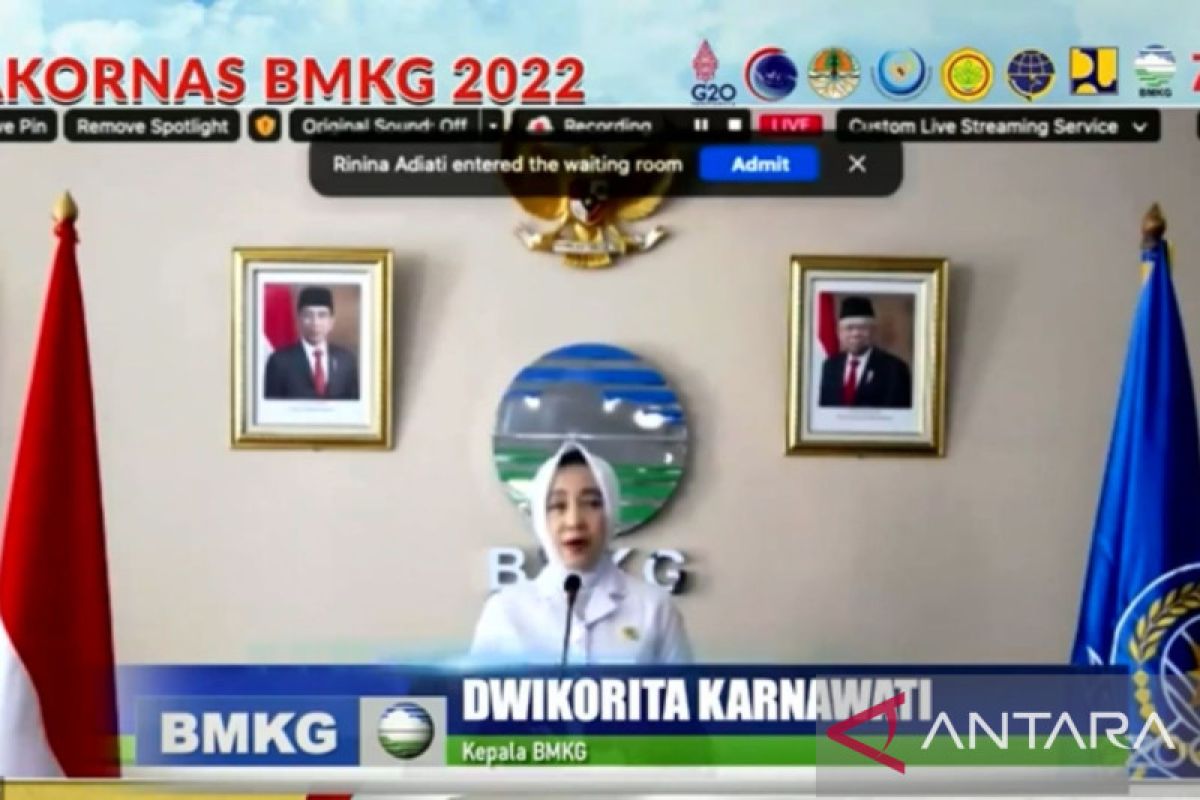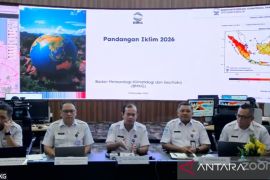The BMKG analyzes and projects that the air temperature at the end of the 21st century can increase by three degrees Celsius or more in all major cities in Indonesia if we failed to mitigate (the impacts of) climate changeJakarta (ANTARA) - The Meteorology, Climatology, and Geophysics Agency (BMKG) forecast that the air temperature in all major cities in Indonesia by the end of the 21st century could increase by three degrees Celsius or more.
Head of BMKG Dwikorita Karnawati stated that the projection could come true if Indonesia failed to mitigate the impacts of climate change.
"The BMKG analyzes and projects that the air temperature at the end of the 21st century can increase by three degrees Celsius or more in all major cities in Indonesia if we failed to mitigate (the impacts of) climate change," she emphasized at the 2022 BMKG National Coordination Meeting here, Monday.
Karnawati noted that climate change had reached a critical condition that would pose a major challenge for Indonesia.
Related news: BMKG updates seasonal zones to improve rain forecast
The impact of climate change is apparent from the rate of temperature increase in the last 42 years that had reached an average of 0.02 degrees Celsius to 0.443 degrees Celsius per decade in Indonesia.
"The highest temperature increase reached 0.4 degrees Celsius per decade in East Kalimantan," Karnawati added.
Meanwhile, Earth's global surface temperature had increased by 1.1 degrees Celsius as compared to the average during the pre-industrial times in the 1850-1900 period.
The BMKG also noted the impact of climate change resulted in warmer sea surface temperatures in the Indonesian waters of up to 29 degrees Celsius during moderate La Nina and Tropical Storm Seroja in East Nusa Tenggara, Karnawati revealed.
In addition, the glacier at Jayawijaya Peak, based on the results of BMKG's research, is currently only about two square kilometers, or one percent of its initial area of about 200 square kilometers.
Related news: BMKG calls for disaster vigilance amid equipment breakdown
"The BMKG also predicts that the glacier will become extinct, melting around 2025-2026," she remarked.
Karnawati explained that the monitored global average sea level rise also reached 4.4 mm per year during the 2010-2015 period, which was higher than the period before 1900, which was 1.2 mm per year.
The return period of El Nino and La Nina climate anomalies is also getting shorter, from five to seven years in the 1950-1980 period, to only two to three years during the period after 1980 up to the present.
"All of these phenomena result in an increased frequency of extreme weather intensity and duration, causing hydrometeorological disasters, such as floods, landslides, flash floods, tropical storms, hurricanes, and droughts, are also increasing in frequency, intensity, duration, and occurrence," she explained.
Related news: Jokowi calls on BMKG to identify climate risks comprehensively
Related news: 16 hotspots of possible forest fires detected in North Sumatra: BMKG
Translator: Devi Nindy Sari R, Resinta S
Editor: Fardah Assegaf
Copyright © ANTARA 2022












